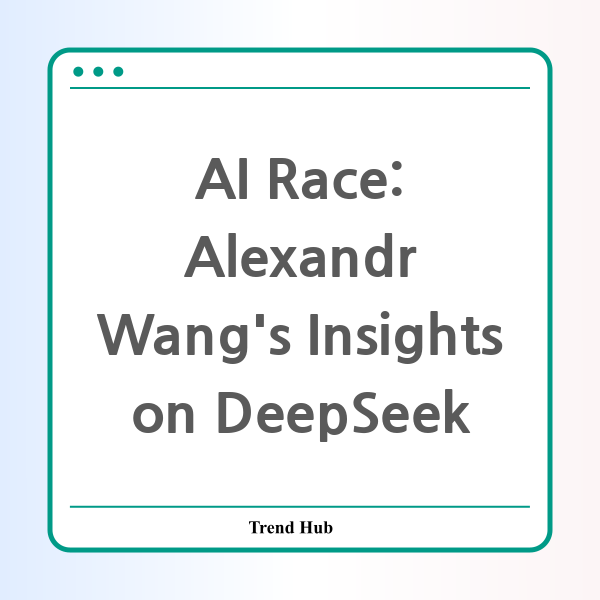* This website participates in the Amazon Affiliate Program and earns from qualifying purchases.

As we navigate through the profound shifts within the tech landscape, have we truly grasped the full implications of the AI race between the U.S. and China? According to Alexandr Wang, CEO of Scale AI, the game has changed significantly with recent developments, marking what he describes as an "AI war." With the release of the DeepSeek model by the leading Chinese AI lab, the dynamics of this competition have escalated.
On Christmas Day, DeepSeek introduced their powerful new AI model, which Wang referred to as an "earth-shattering model." This release is not merely a technological advancement; it signifies a pivotal moment in the ongoing competition in artificial intelligence. Wang pointed out in his recent address at the World Economic Forum in Davos that this model performs at par with the best American AI technologies. The second part of DeepSeek’s offering, the DeepSeek-R1 model, emphasizes reasoning capabilities; it competes directly with OpenAI's recently launched o1 model, showcasing the rapid advancements emerging from Chinese AI labs.
Wang's assertion that the U.S. has lagged behind in this AI race resonates with the prevailing narrative that views China's AI capabilities as catching up quickly. This could be attributed to a significant stock of H100 GPUs, essential for developing robust AI models. Despite U.S. export controls, Wang believes China has a strategic advantage in computational resources that could reshape the landscape.
Looking ahead, Wang estimates that it could take just two to four years to reach artificial general intelligence (AGI) — a benchmark that is both exciting and contentious. AGI aims to create AI systems that can perform tasks with human-like intelligence across various domains. In Wang's view, achieving AGI means creating powerful AI that can perform tasks independently as if they were human, thereby acting as a "remote worker" with unmatched capabilities.
Consider the implications of this. If we reach AGI, the potential applications could revolutionize industries ranging from healthcare to education. However, it also urges a call to action for the U.S. to bolster its AI infrastructure. Recent announcements of a $100 billion investment plan, dubbed Stargate, involving key tech leaders and the White House, signal an urgency to strengthen U.S. standing in AI technology. This investment aims to ramp up computational capacity, essential for competing in this fast-evolving arena.
Moreover, it's essential to recognize that the competitive landscape among U.S. startups is intensifying. Notable players like OpenAI and Anthropic are pushing the envelope with innovative capabilities. For instance, Anthropic’s recent advancements allow AI agents to operate computers in a manner similar to humans, further blurring the lines between human and machine capabilities. Such innovations are raising the stakes and setting the stage for a more competitive landscape.
In summary, the AI race is more than just a technological competition. It encompasses strategic resources, investment in infrastructure, and a vision for the future of human-like AI capabilities. As we delve deeper into this exciting era, the stakes are at an all-time high, and the world is watching closely. Will the U.S. regain its lead, or will China continue to push the boundaries of AI innovation?
* This website participates in the Amazon Affiliate Program and earns from qualifying purchases.